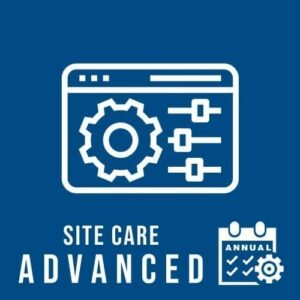WordPress is a widely popular content management system that allows users to create websites easily. However, many website owners and developers often require more control over their website’s design and functionality. This is where Full Stack WordPress comes in. Full Stack WordPress involves building a custom website from scratch, using WordPress as a foundation, and adding custom features and functionality as needed.
What is a Full Stack WordPress Website?

A full stack WordPress website is a comprehensive website design solution utilizing the popular content management system (CMS) WordPress. It offers an all-in-one package that covers the front-end design, back-end coding, and hosting of a website. WordPress sites are user-friendly and feature dynamic content that site administrators can manage. With a full-stack WordPress website, users can access a suite of tools, including themes and plugins, to customize their website’s look and functionality.
Additionally, a full stack package includes web hosting and maintenance services to keep the site secure and up to date. Utilizing WordPress as the base platform enables users to build powerful websites with unlimited possibilities. From e-commerce shops to blogs, membership sites to podcasting platforms, a full-stack WordPress website can support any type of online presence. With its flexibility, affordability, and user-friendly design, there’s no doubt why WordPress is one of the most popular CMSs available today.
Build a Full Stack WordPress Website from Scratch
Now, let’s start building a full-stack WordPress website.
Planning Your Full-Stack WordPress Website
Before you start building your Full Stack WordPress website, it’s important to plan out the website’s design, features, and functionality. This will help you stay organized and focused as you build your website.
Here are some key steps to follow when planning your Full Stack WordPress website:
- Define the purpose and goals of your website
- Identify your target audience and user personas
- Create a site map and wireframes for your website’s design
- Determine the features and functionality your website will need
- Choose a WordPress theme that matches your website’s design and style
- Decide on the plugins and tools you will need to build your website
Setting Up Your Development Environment
Once you have planned out your Full Stack WordPress website, it’s time to set up your development environment. This involves installing and configuring the necessary software and tools you will need to build your website.
Here are some key steps to follow when setting up your development environment:
- Install a local development environment, such as XAMPP or WAMP
- Install and configure a code editor, such as Visual Studio Code or Atom
- Install WordPress locally using the installation wizard or command line
- Set up a version control system, such as Git, to manage your code changes
Building the Front-end of Your Website
The front-end of your Full Stack WordPress website refers to the user interface with which your visitors will interact. This includes the design, layout, and visual elements of your website.
Here are some key steps to follow when building the front-end of your website:
- Create a custom WordPress theme using HTML, CSS, and JavaScript
- Use a CSS preprocessor, such as Sass or Less, to streamline your styling
- Add custom fonts and icons using a font library, such as Google Fonts or Font Awesome
- Optimize your website’s images and media files for faster loading times
- Implement responsive design to ensure your website is mobile-friendly
Building the Back-end of Your Website
The back-end of your Full Stack WordPress website refers to the server-side components that power your website’s functionality. This includes the database, server-side scripting, and custom plugins or functionality.
Here are some key steps to follow when building the back-end of your website:
- Create a custom plugin or use existing ones to add functionality to your website
- Customize WordPress core functionality using hooks and filters
- Use PHP and MySQL to interact with the WordPress database and create custom queries
- Implement user authentication and authorization to control access to certain parts of your website
- Use caching and optimization techniques to improve your website’s performance
Integrating Custom Functionality and Features
One of the advantages of Full Stack WordPress is the ability to add custom functionality and features to your website. This can be done by building custom plugins or by integrating existing APIs and third-party services.
Here are some key steps to follow when integrating custom functionality and features:
- Use the WordPress REST API to create custom endpoints and data sources
- Integrate third-party services, such as payment gateways or social media platforms, using APIs or SDKs
- Build custom forms and surveys using plugins or HTML and JavaScript
- Implement e-commerce functionality using WooCommerce or other e-commerce plugins
- Use WordPress Multisite to create a network of interconnected websites
Testing and Debugging Your Website
Once you have built your Full Stack WordPress website, it’s important to test and debug it to ensure that it works properly and is free of errors or bugs.
Here are some key steps to follow when testing and debugging your website:
- Use browser developer tools to debug your website’s front-end code
- Use the WordPress debug mode to debug your website’s back-end code
- Perform manual testing to ensure that all functionality and features work as expected
- Use automated testing tools, such as PHPUnit or Selenium, to automate testing and catch potential issues
- Use error and exception handling to gracefully handle unexpected errors or user input
Deploying Your Full Stack WordPress Website
Once you have tested and debugged your Full Stack WordPress website, it’s time to deploy it to a live server where visitors can access it.
Here are some key steps to follow when deploying your website:
- Choose a web hosting provider and set up a hosting account
- Transfer your website’s files and database to the live server using FTP or a hosting control panel
- Set up a domain name and configure DNS settings to point to your website’s server
- Secure your website using HTTPS and SSL certificates
- Monitor your website’s performance and security using analytics tools and security plugins
Conclusion
Full Stack WordPress provides website owners and developers with the flexibility and control to build custom websites that meet their unique needs and requirements. By following the key steps outlined in this blog post, you can build a Full Stack WordPress website from scratch and add custom features and functionality as needed. With the right planning, tools, and resources, you can create a professional and engaging website that stands out from the crowd.





[…] if you are planning to build your WordPress website or if you own one already, we recommend having a trusted and reliable WordPress maintenance service […]
[…] industries. However, not everyone has the time, technical expertise, or resources to design and develop a WordPress website from scratch. That’s where a WordPress development agency comes in. By hiring a professional […]